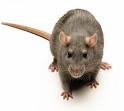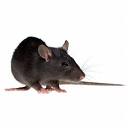 Rats( Rattus Norvegicus) and
Rats( Rattus Norvegicus) and  Mice ( Mus Musculus) are a hazard to public health along with many other pests species.
Mice ( Mus Musculus) are a hazard to public health along with many other pests species. Rest Assured Pest Control
Pest Control Specialist
freephone: 0800 955 0989 Mobile: 07956 460 865
Keeping your home and business pest-free is essential for a healthier and safer environment.
Commission us to eliminate pests from your property.
Contact Rest Assured Pest Control for peace of mind, Solve your pest problem fast!
 Rats( Rattus Norvegicus) and
Rats( Rattus Norvegicus) and  Mice ( Mus Musculus) are a hazard to public health along with many other pests species.
Mice ( Mus Musculus) are a hazard to public health along with many other pests species.
Some information on diseases that they can spread!
Hantavirus Pulmonary Syndrome (HPS): Hantavirus pulmonary syndrome (HPS) is a deadly disease transmitted by infected rodents through urine, droppings, or saliva. Humans can contract the disease when they breathe in aerosolized virus, HPS is potentially deadly. Rodent control in and around the home remains the primary strategy for preventing hantavirus infection.
Murine Typhus: Murine typhus (caused by infection with R. typhi) occurs worldwide and is transmitted to humans by rat fleas. Flea-infested rats can be found throughout the year in humid environments, but in temperate regions are most common during the warm summer months. Travelers who visit in rat-infested buildings and homes, especially in harbor or riverine environments, can be at risk for exposure to the agent of murine typhus.
Rat-bite fever (RBF): Rat-bite fever (RBF) is a systemic bacterial illness caused by Streptobacillus moniliformis that can be acquired through the bite or scratch of a rodent or the ingestion of food or water contaminated with rat feces.
Salmonella enterica serovar Typhimurium: As its name suggests, it causes a typhoid-like disease in mice. In humans S. Typhimurium does not cause as severe disease as S. Typhi, and is not normally fatal. The disease is characterized by diarrhea, abdominal cramps, vomiting and nausea, and generally lasts up to 7 days. Unfortunately, in immunocompromized people, that is the elderly, young, or people with depressed immune systems, Salmonella infections are often fatal if they are not treated with antibiotics.
Leptospirosis: Leptospirosis is a bacterial disease that affects humans and animals. It is caused by bacteria of the genus Leptospira. In humans it causes a wide range of symptoms, and some infected persons may have no symptoms at all. Symptoms of leptospirosis include high fever, severe headache, chills, muscle aches, and vomiting, and may include jaundice (yellow skin and eyes), red eyes, abdominal pain, diarrhea, or a rash. If the disease is not treated, the patient could develop kidney damage, meningitis (inflammation of the membrane around the brain and spinal cord), liver failure, and respiratory distress. In rare cases death occurs.
Eosinophilic Meningitis: Eosinophilic meningitis is an infection of the brain occurring in association with an increase in the number of eosinophils, white blood cells that are associated with infection with worms that penetrate into the body. The organism most commonly causing eosinophilic meningitis is a rat lung worm called angiostrongylus cantonensis.
Rats and Mice cause significant damage to commodities and the fabric of buildings.
Rabbits ( Oryctolagus cuniculus ) are on the increase by approximately 2% a year along side some rodents such as rats ( Rattus noregicus ) and mice ( Mus domesticus )
Pigeon (Columba livia). Birds such as pigeons and gulls carry many diseases and have become a major pest making them a public health hazard.
Histoplasmosis is a disease caused by a fungus, which grows in pigeon droppings. It also grows in soils and is found throughout the world. When cleaning droppings a person may breathe in some of the fungus, which in cases of high exposure can cause infection. Common activities, such as cleaning off windowsills, will not result in high exposures.
Symptoms of histoplasmosis begin to appear about 10 days after initial infection and include fatigue, fever, and chest pains. Most people, however, do not show any symptoms. Those with compromised immune systems such as cancer patients or people living with HIV/AIDS are generally more at risk of developing histoplasmosis. The disease cannot be transmitted from person to person.
Cryptococcosis is another fungal disease associated with pigeon droppings and also grows in soils throughout the world. It is very unlikely that healthy people will become infected even at high levels of exposure. A major risk factor for infection is a compromised immune system.
Business Directories - attract the right results with Businessmagnet the online directory